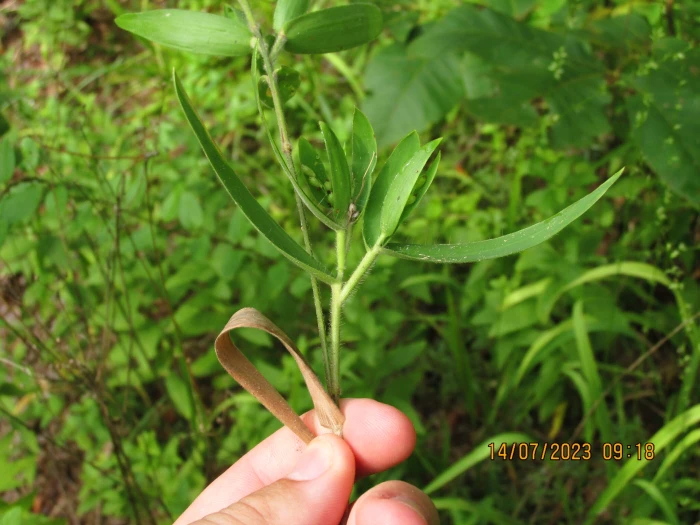Ravenel’s Rosette Grass
(Dichanthelium ravenelii)
Ravenel’s Rosette Grass (Dichanthelium ravenelii)
/
/

© macgyver97
CC BY-SA 4.0
Image By:
© macgyver97
Recorded By:
Copyright:
CC BY-SA 4.0
Copyright Notice:
Photo by: © macgyver97 | License Type: CC BY-SA 4.0 | License URL: http://creativecommons.org/licenses/by-sa/4.0/ | Uploader: macgyver97 | Publisher: iNaturalist |

























Estimated Native Range
Climate Requirements for San Bernardino, California
| This Plant | Your Site | Plant Suitability for Your Location | ||
|---|---|---|---|---|
| • Precipitation | 35" - 67" | 12" | Your precipitation may be insufficient for this plant. Irrigate N" / year. | Irrigate N" / year |
| • High Temp. | 83°F - 96°F | 96°F | Your summer temperatures are normal for this plant. | Excellent |
| • Low Temp. | 19°F - 45°F | 40°F | Your winter temperatures are normal for this plant | Excellent |
This plant should grow well at your location with about N inches per year (Y minutes per month) of irrigation.
Summary
Dichanthelium ravenelii, commonly known as Ravenel’s Rosette Grass or Ravenel’s Panic Grass, is a perennial grass native to the Southeastern United States, typically found in pine barrens, dry sandy woods, and open fields. It reaches a height of 1-2 feet (0.3-0.6 meters) and is characterized by its clumping growth habit and fine-textured foliage. The flowers, which are green or brown and rather inconspicuous, appear in the summer and are not the main attraction of this grass. Instead, its value lies in its ability to thrive in poor soils and its use as a ground cover or in naturalized areas.
Ravenel’s Rosette Grass is appreciated for its adaptability to a range of soil conditions and its drought tolerance once established. It is often used in restoration projects, native plant gardens, and as a filler in borders or meadows. This grass prefers full sun to part shade and performs best in medium to fast-draining sandy or loamy soils. It requires medium amounts of water, but can tolerate dry spells. While it is not known for any significant problems or diseases, it can be less competitive in rich, moist soils where more aggressive species may outcompete it.CC BY-SA 4.0
Ravenel’s Rosette Grass is appreciated for its adaptability to a range of soil conditions and its drought tolerance once established. It is often used in restoration projects, native plant gardens, and as a filler in borders or meadows. This grass prefers full sun to part shade and performs best in medium to fast-draining sandy or loamy soils. It requires medium amounts of water, but can tolerate dry spells. While it is not known for any significant problems or diseases, it can be less competitive in rich, moist soils where more aggressive species may outcompete it.CC BY-SA 4.0
Plant Description
- Plant Type: Grass
- Height: 1-2 feet
- Width: 1-2 feet
- Growth Rate: Moderate
- Flower Color: N/A
- Flowering Season: Spring, Summer, Fall
- Leaf Retention: Deciduous
Growth Requirements
- Sun: Full Sun, Part Shade
- Water: Medium
- Drainage: Medium, Fast
Common Uses
Erosion Control, Low Maintenance
Natural Habitat
Native to pine barrens, dry sandy woods, and open fields in the Southeastern United States
Other Names
Common Names: Ravenel’s Panic Grass
Scientific Names: Dichanthelium ravenelii, Panicum ravenelii, Panicum scoparium, Panicum scoparium var. liebergii, Panicum scoparium var. major, Panicum scoparium var. majus
GBIF Accepted Name: Dichanthelium ravenelii